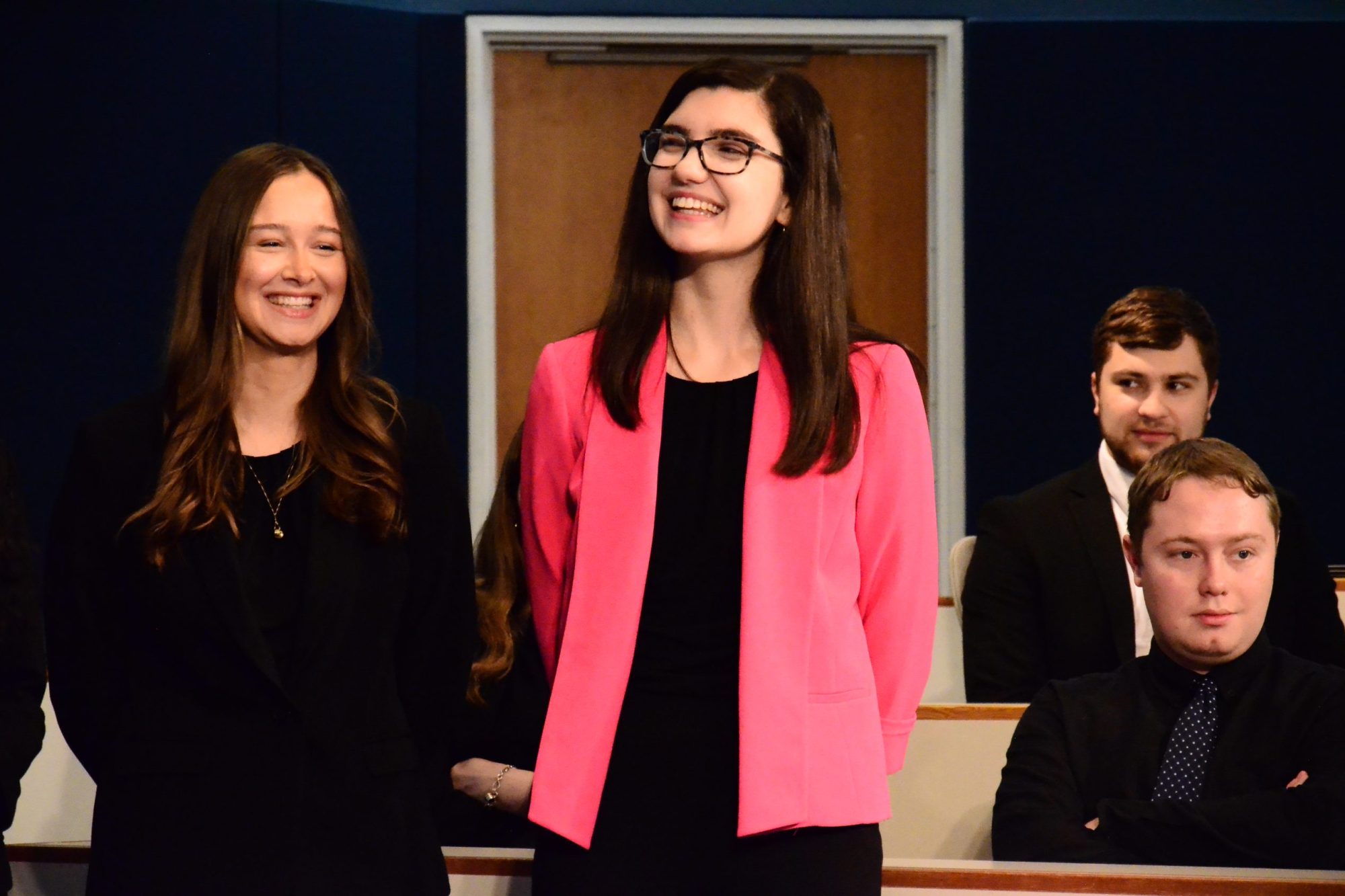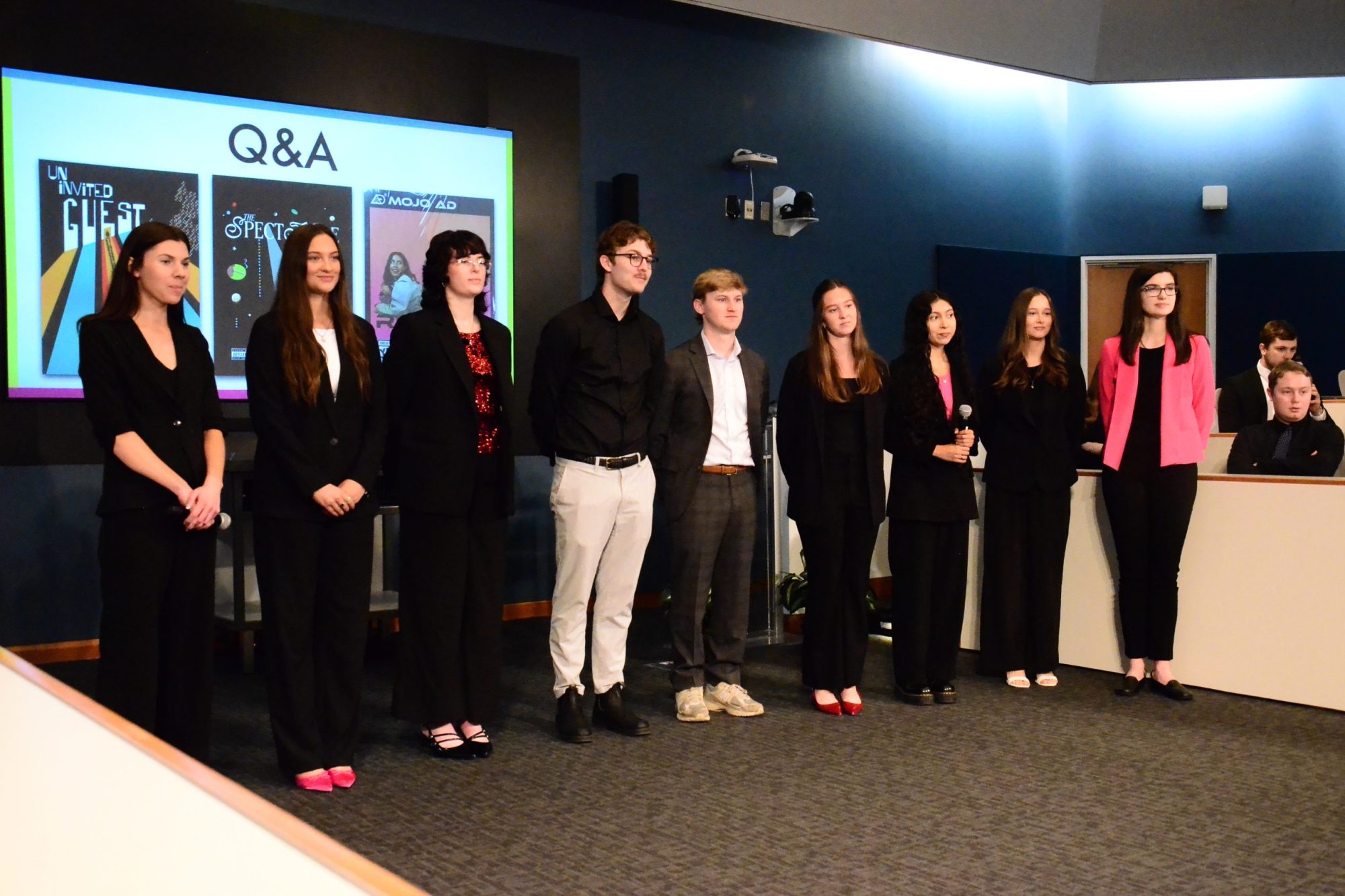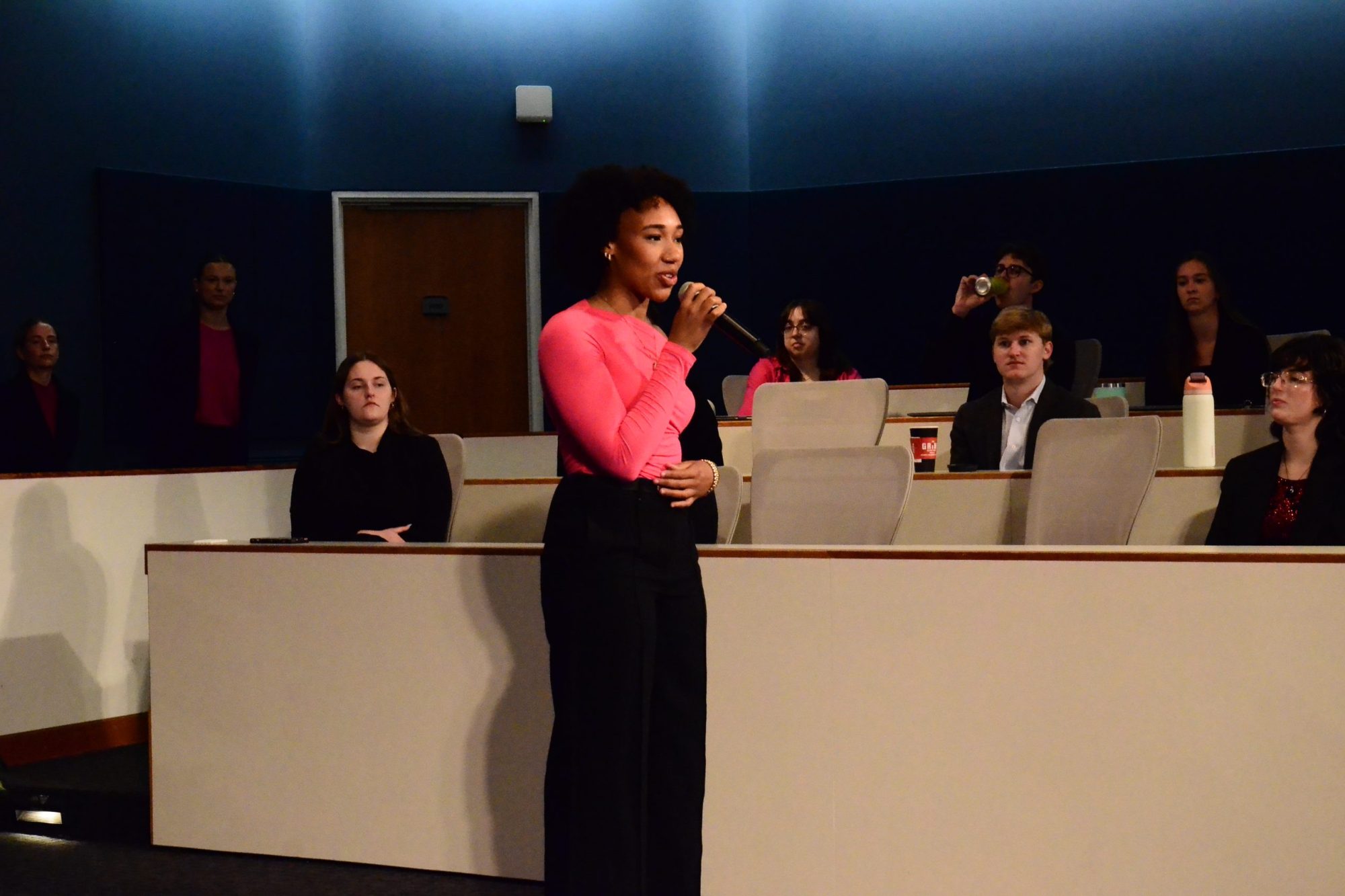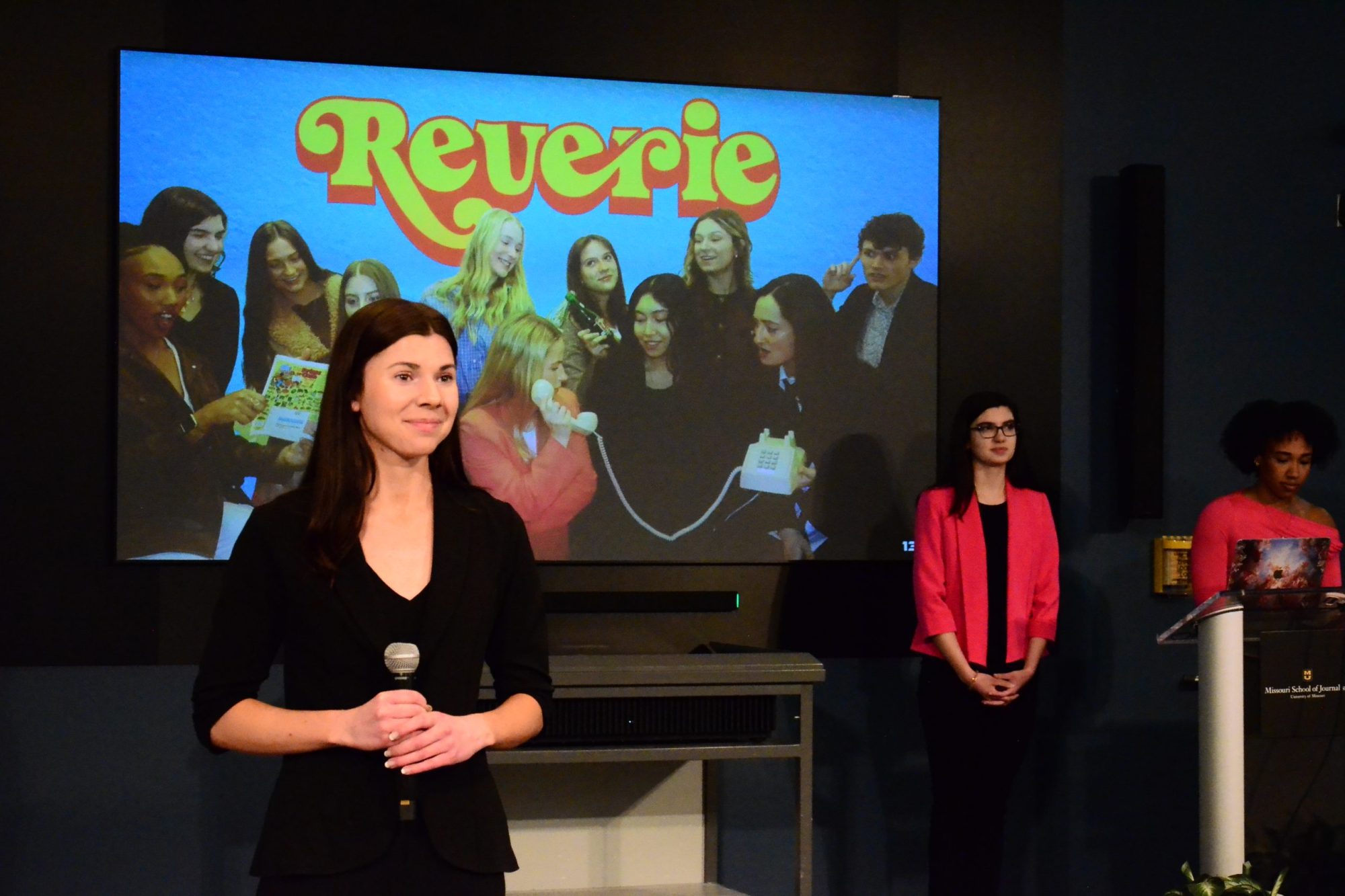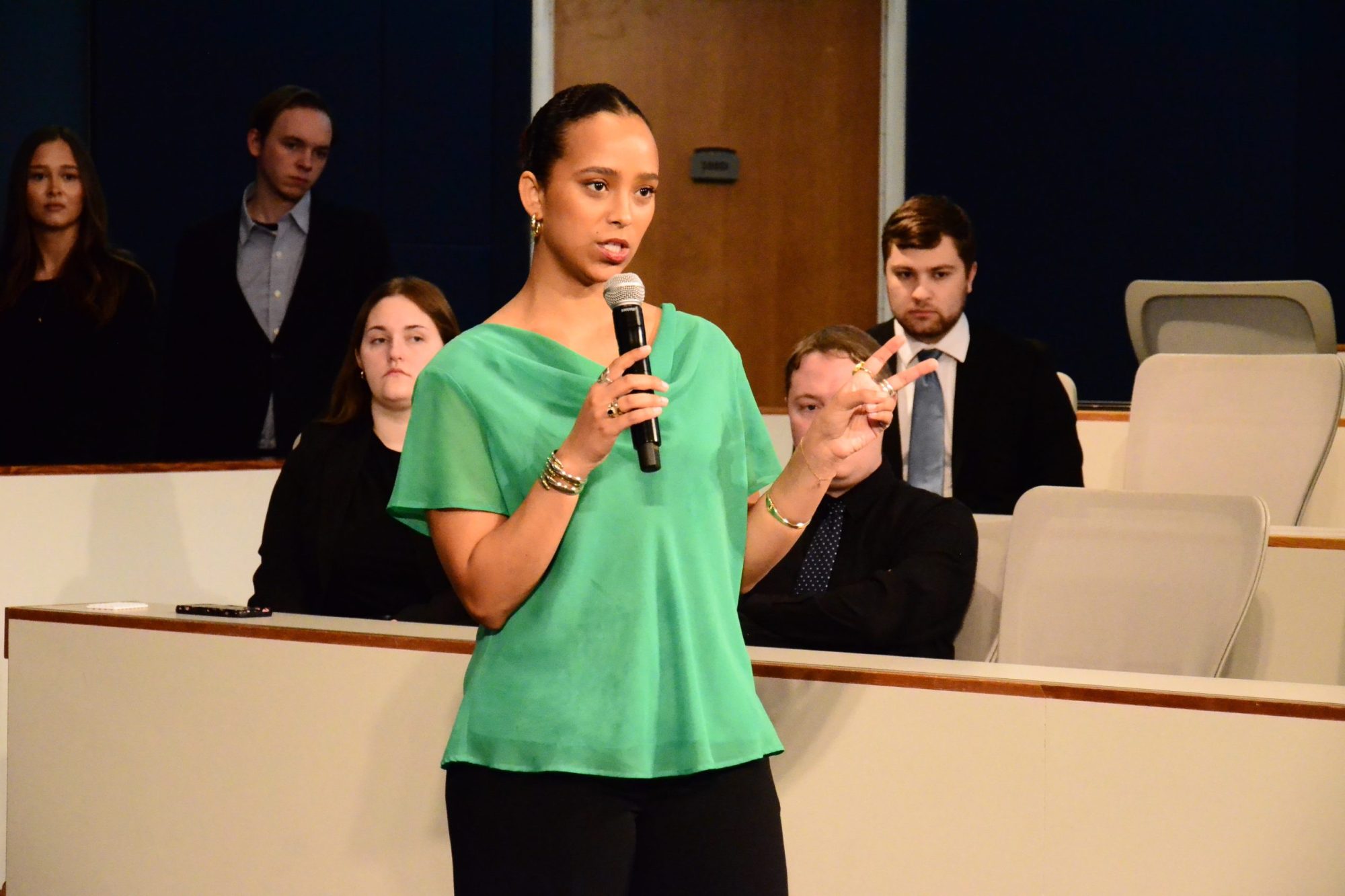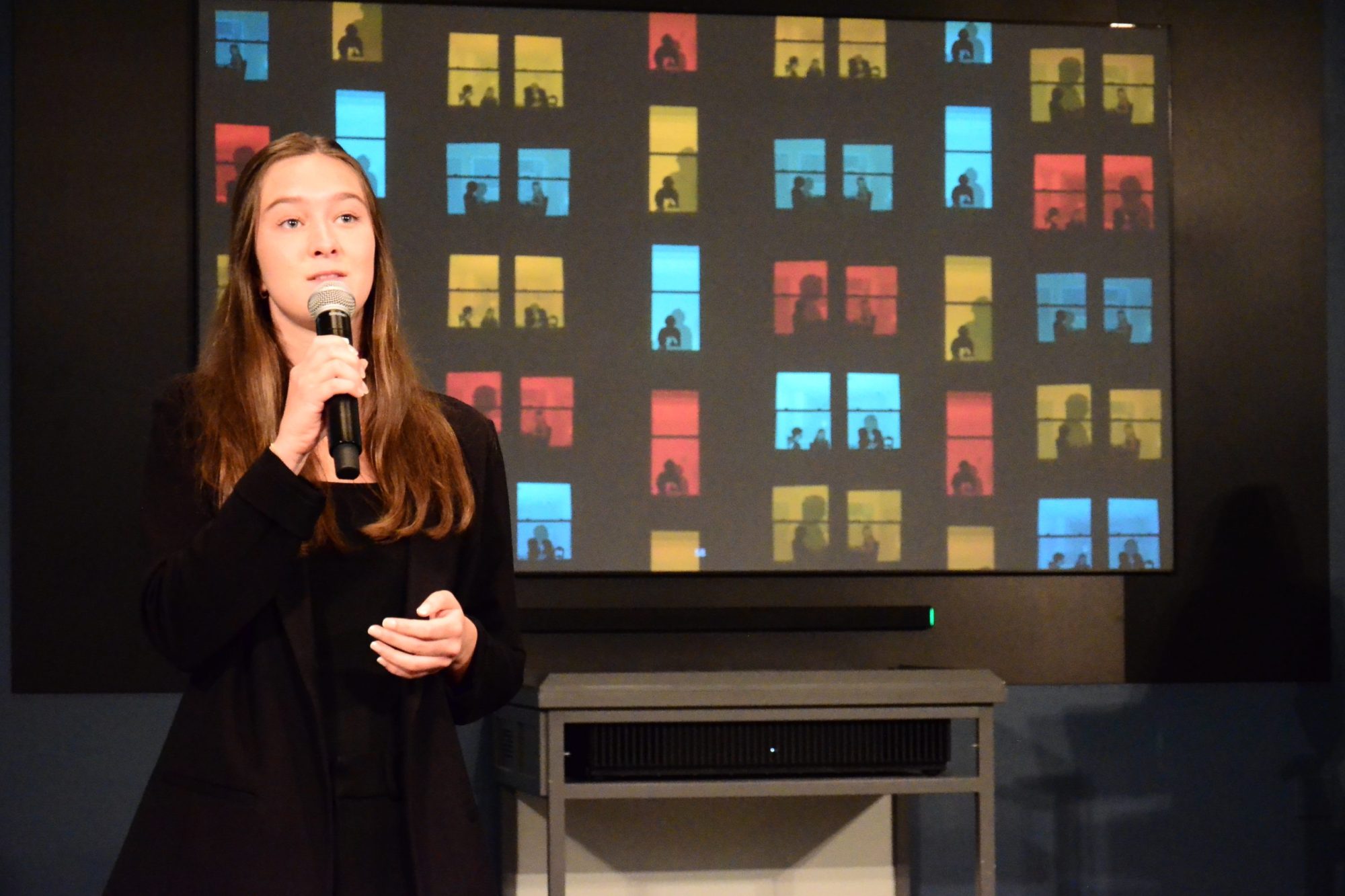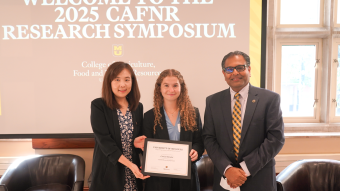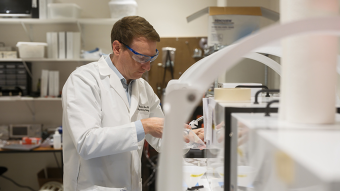Oct. 6, 2025
Contact: Cary Littlejohn, carylittlejohn@missouri.edu
Photos by Frank Corridori
At the University of Missouri School of Journalism, strategic communication students have countless opportunities to plan, interview, work with clients, write, present and take on other real-world projects that build professional expertise.
For students in MOJO Ad, the premiere student-staffed ad agency at the journalism school, these skills come together in the spring semester through creating the State of the YAYA report.
Three teams of MOJO Ad students each spent the semester tackling a unique big-issue question, such as “What does ‘success’ mean today?” The teams strived to answer such questions through the lens of one demographic in particular: youth and young adults (YAYA), ages 18 to 24. The teams presented detailed reports that provided their analyses to public relations firms and advertising agencies, allowing the students’ insights to be applied to ongoing campaigns and strategies.
The semester culminates in a high-energy event that showcases this in-depth market research through a presentation with multiple speakers, on-screen graphics, lighting and sound effects. But behind the showmanship lies the foundation of the work: in-depth quantitative and qualitative research that fuels the reports and presentation.
Quantifying curiosity and putting the quality in qualitative
The YAYA market represents more than 31 million people in the United States and $9.8 trillion in spending power. Understanding this highly sought-after demographic is vital to brand professionals, and MOJO Ad’s students serve as liaisons armed with insider information bolstered by research.
“Our goal with MOJO Ad is to shine a light on what research is like in our industry,” Jon Stemmle, professor of strategic communication, said. “We put them through the rigor of academic, Institutional Review Board-approved research so that they understand how the quantitative and qualitative efforts go hand-in-hand. You really need both in order to fully grasp human nature.”
That’s where Lorraina Scolaro and Audrey Stowe came in. Each team had two researchers — one quantitative and one qualitative — and Scolaro and Stowe represent how each method of research contributed to the rich data MOJO Ad students shared with PR firms and ad agencies. The researchers contributed to surveys sent across the nation and led focus groups and interviews; these research methods resulted in detailed responses from 18-to-24-year-olds representative of U.S. Census Bureau demographics.
Scolaro, BA, BJ ’25, was a quantitative researcher for Team Kinetic, which tackled a thorny question: “Will artificial intelligence ruin the world?”
Along the way, the team uncovered some striking statistics: 53% of YAYAs “feel conflicted” about AI, 19% “welcome AI in every aspect of their life” and 44% “use AI despite fearing it.”
Before Scolaro could even begin crafting questions, she spent two weeks conducting secondary research, poring over literature and case studies related to AI.
Her team’s process began with the qualitative research, and she was able to integrate some of those findings into her survey.
“You have to take what you're trying to ask in the qualitative setting and make it a closed question,” Scolaro said. “So, it's a little bit trickier because you can't leave anything open-ended. I had a lot of fun with that. It was like a puzzle for me.”
Crafting the survey was a constantly moving target, one that emphasized the creativity and responsiveness this type of research required and highlighted the collaborative team-oriented approach that the State of the YAYA presentation encourages. Scolaro loved the challenge.
“Throughout the process, I was continuously adding, deleting, changing the order, changing the style of the questions,” Scolaro said. “Essentially, my survey wasn't complete until it was sent out, because throughout this whole process, I learned I could always make a better survey.”
In Scolaro’s eyes, that attention to detail, the thoughtfulness that’s required to do this research, helps to defend strategic communication and advertising from criticism.
“Companies have reasons for why they target certain people and why they send certain messages,” she said. “We are really delving into how companies can best resonate with their consumers, and I love providing the foundation for those decisions through research.”
Audrey Stowe, BSBA, BJ ’25, was a qualitative researcher for Team Oracle, and like Scolaro and Team Kinetic, she and her team were trying to answer a big question: “What is taboo?” Answering this required a probing exploration into YAYAs’ relationships with taboo subjects such as religion and drug use.
The sensitive nature of the topic tested Stowe’s qualitative skills, but it didn’t intimidate her.
“I had to acknowledge that there needed to be a certain level of care with the way I approached these questions,” Stowe said. “There is something really fulfilling about interviewing strangers and, at the end, knowing you made the participants feel comfortable enough to share what could be considered very vulnerable moments of their lives, backgrounds or experiences.”
Her approach yielded interesting results that allowed a peek into the minds of YAYAs. For instance, one participant viewed recreational drug use as problematic but felt differently about drug use to treat mental illness.
Such honest and complicated answers are what she loves about research.
“Qualitative research is not just trying to understand the results of surveys,” Stowe said. “It’s about the why, which is the story, narrative or anecdote behind someone’s survey answer.”
MOJO Ad and the State of the YAYA gave Stowe the opportunity to grow as a researcher and put the hard-won insights to good use. And she’s going to continue to refine those research skills in her first full-time role at Ogilvy, the New York City-based advertising, PR and marketing firm.
The grounded research practices behind the State of the YAYA also provided Scolaro, a YAYA, a chance to learn about herself. As a double major in peace studies, she spent a lot of time in the College of Arts and Science and, as a result, wasn’t as involved in activities or clubs through the journalism school.
“My journalism school journey wasn’t a typical one,” Scolaro said. “I felt I had a hard time finding my place until MOJO Ad, and getting into research really allowed me to blend my interests and values into my work. I feel like a lot of people are kind of scared when they hear ‘research’ because they automatically think of lab coats and vials and things like that. They don’t see that research is just another way of exploring many of the same skills and values we develop elsewhere in the journalism school.”
In the fall, Scolaro will continue her education at Mizzou in pursuit of a master’s degree in strategic communication with an emphasis in research.
From valuable insights for PR firms and ad agencies to personal discoveries for its students, MOJO Ad’s State of the YAYA — through its written reports and high-energy presentation — provides opportunities to address real-world questions facing advertisers and empowers students to become authoritative voices on this valuable demographic.
Research — hard-earned, probing and insightful — made it possible.
